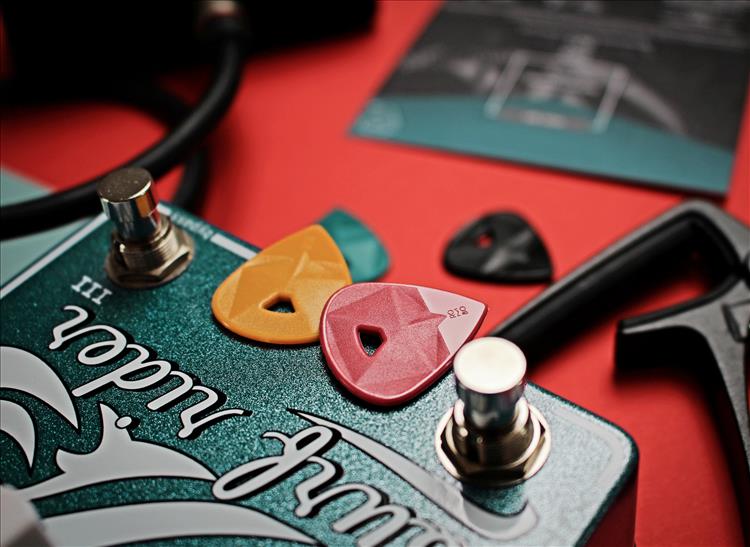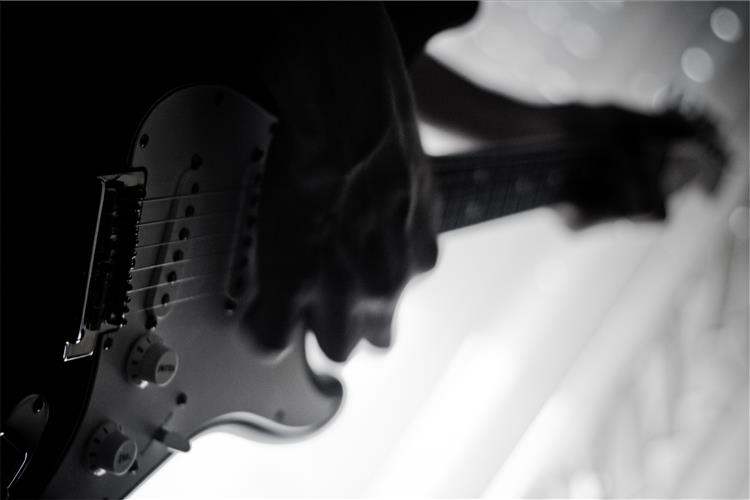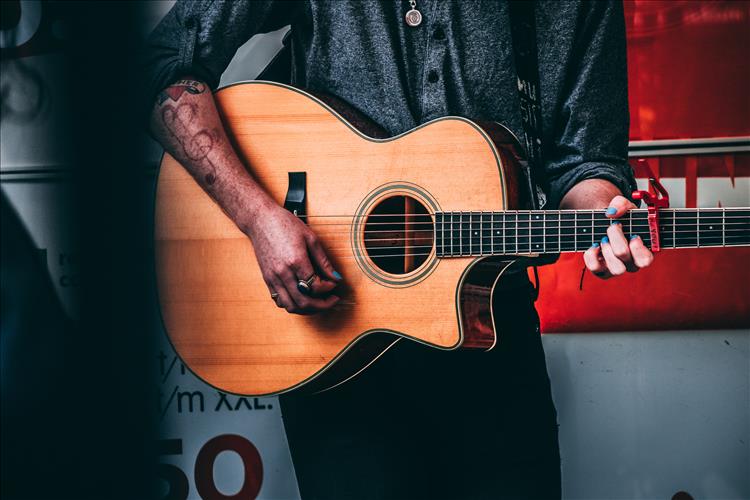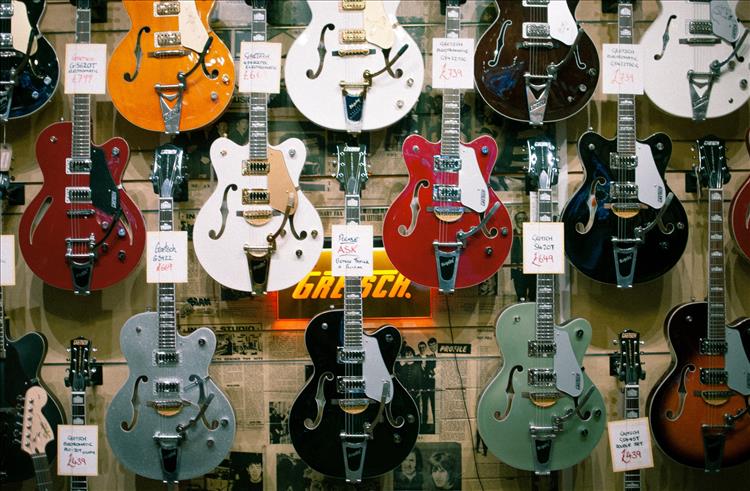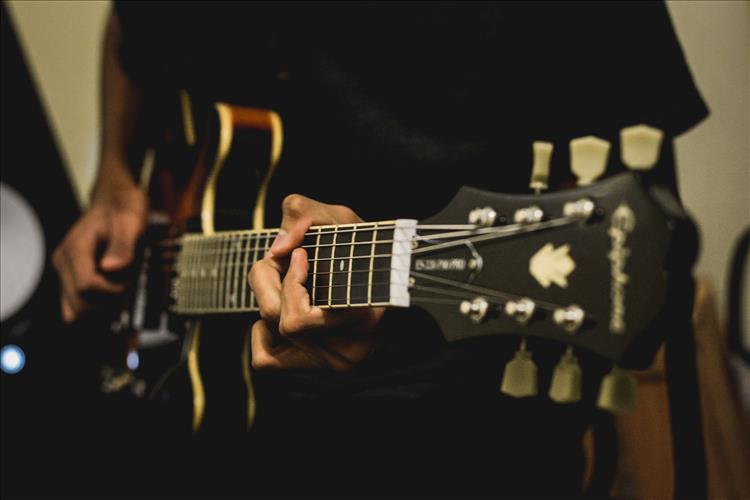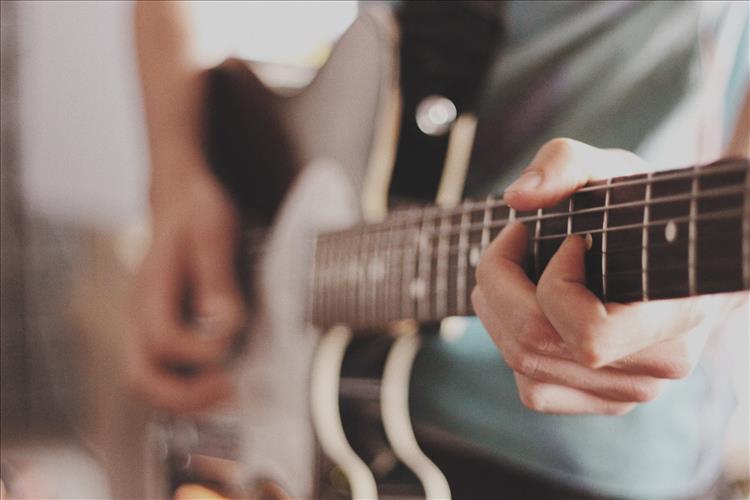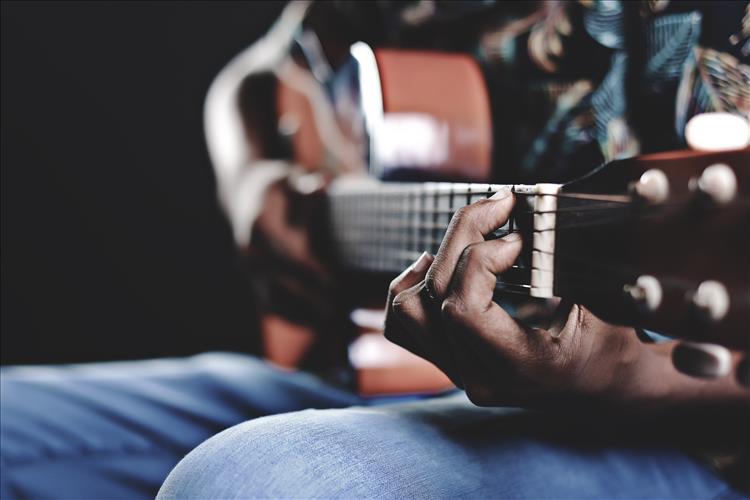Learn what to practice on guitar in this comprehensive guide!
Over 250,000 guitar-learners get our world-class guitar tips & tutorials sent straight to their inbox: Click here to join them
In this free lesson you will learn…
- The top 8 things you should be practicing
- Why it’s so important to build a vocabulary of chords
- How to learn how to solo
- How to use a practice journal
Let’s Start Developing A Routine For What To Practice On Guitar
One of the hardest parts of learning any instrument is the process of building good habits.
Stretching, practicing, building a repertoire of music – these are all things that need to be built up over time through habit-building.
- By developing good habits, we make our lives a lot easier when it comes to understanding and playing music.
- The first habit we should build when learning guitar is the habit of effective practice.
In this free guide, we’re going to take you through each key element of a good practice routine.
Pro Tip: A practice journal is a great way to keep track of your daily practice and accomplishments. Visualizing our progress is fantastic, and it keeps us motivated to constantly be smashing our goals.
When you lay out your practice routine, make sure your goals are achievable at your current skill level.
- Do: Make it your goal to learn a new chord on Monday.
- Do Not: Set a goal to be able to shred like Yngwie Malmsteen by Friday.
Achievable goals keep us motivated, while distant and hard-to-reach goals can kill our confidence rather quickly.
Why Do We Need A Practice Routine?
It’s very easy to sit down with our favourite guitar and simply noodle around, but is that really helping us improve?
- Odds are, unless your shredding up a storm as part of your warm up, your warm-up noodling isn’t taking you anywhere substantial.
- With this in mind, we need to focus on the things that will advance our playing and point us in a productive direction.
A practice routine helps us shape our playing and focus on our weak points.
This way, we can turn those weaknesses into strong suits.
- The point of this guide is to show you what to what you should be focusing your time on.
- We all have lives and commitments, and it’s important to make good use of the time we have with our instrument.
With all of this in mind, let’s get to the point: what to practice on guitar first!
What To Practice On Guitar I – Build Your Chord Vocabulary
Chords are often overlooked in the early stages of guitar playing unless we’re specifically instructed to play them.
Let’s be honest – everyone wants to play all the notes when they first start playing guitar, and we can’t blame them either.
Chords however, are what establish a foundation underneath us for guitar playing.
It’s important that we learn our major and minor chords first so that we can have a better understanding of the songs that we want to play along to.
Every song you have ever heard is built off of a chord progression.
From Lynyrd Skynyrd to Etta James, every musician uses chords to express themselves and write songs.
- Start with your major and minor chords, then work up to learning major and minor sevenths.
- Suspended chords are another great style of chord to play with that can be substituted for other major and minor chord shapes.
- The more chord shapes you know, the more free you are to experiment and play with your guitar!
If you want some guidance on what to practice on guitar where chords are concerned, check out the lessons below:
- Easy Ways To Play The C Chord
- F Guitar Chord – 3 Easy Alternatives
- Barre Chords – The Ultimate Guide
Learn 12 EASY beginner chords with our popular guide

✅ Stop struggling. Start making music.
✅ Learn beginner-friendly versions of every chord.
This is our most popular guide and it will improve your chord ability quickly! 😎
Get your own personalised guitar-learning plan 🎸
Get a custom guitar-learning plan here: Click here for GuitarMetrics™
World-Class Guitar Courses 🌎
Learn from the world's best guitar educators: Click here for our guitar courses
What To Practice On Guitar II – Songs That You Like
Once you’ve established a good vocabulary of chords, it’s time to put them all to work!
Learn songs that you enjoy listening to. If you don’t take an interest in a certain style of music, there isn’t much point to you learning it (unless it’s a gig and you’re getting paid – then start practicing!)
- Create a list of songs that you like, and then search for their chord charts on your favourite search engine.
- Take the time to learn each chord fluently, then practice the chord changes.
- Strum along until it becomes second nature, and then try another song with similar chord structure.
Developing your own repertoire is important.
Don’t just let teachers or the internet push song material on you that you may or may not enjoy – find the songs that you love and learn to play them.
Pro Tip: Regardless of skill level, every song that we learn has something to offer us in terms of learning effectively. Every musician who writes a song writes it from a different perspective than the next. We each learn differently, and how we learn reflects in the music we write.
- That means that every time you learn a song from a new artist, you’re absorbing some of their guitar journey as well.
- Embrace the journey and learn as many songs as you can – each one will teach you something new.
What To Practice On Guitar III – The Chromatic Scale
The chromatic scale might light your fingers up like a campfire the first time you play it, but don’t quit early. This scale holds all types of practice techniques that help our fingers grow.
The chromatic scale is the first scale that many of us learn, and rightfully so as it teaches to navigate the first four frets in sequence. From there, it can teach us to navigate any four fret sequence if we learn how to use it.
- Start by playing the chromatic scale on the first four frets of the guitar ascending.
- Focus on alternate picking to get a smooth motion going in your picking hand, and make sure to start on a downstroke.
We’ve outlined the chromatic scale ascending for you below:
Pro Tip: What goes up must come down!
Practicing the chromatic scale descending from the high E string is just as important as the exercise above. Playing this exercise in both directions helps us develop better mobility across the strings as we progress.
Double Pro Tip: One amazing tool you have at your disposal is a metronome.
- When forming a routine of what to practice on guitar, make sure that practice involves this handy little machine.
- Metronomes help us keep better time, and should be used especially when playing these exercises here.
Check out the descending chromatic scale below:
What To Practice On Guitar IV – Learn Your Scales
We can’t say it enough!
Incorporating scale practice into our regimen of what to practice on guitar ensures that we learn how to speak the language of music with more than just chord shapes.
- Scales may help us learn to solo, but they also help us memorize sounds.
- For every scale in existence, there is a series of chords to go with it.
Combine a good practice of scales with a wide vocabulary of chords and you’ve got a recipe for success!
Pro Tip: Did you know that if you learn a type of scale in one position, you’ve technically learned them in all positions?
That’s right!
- Every scale has a specific shape, but the notes change depending upon where it is being played.
- That means you already know twelve times as many scales as you thought you did! Congratulations!
- If you’re wondering about what to practice on guitar, scales are a great place to start.
Interested in getting started learning scales? Check out our lesson on the C major scale here.
What To Practice On Guitar V – The CAGED Chord System
The CAGED system is a widely used system of chord memorization that helps us to more easily navigate the fretboard.
The downside is, it takes a bit of memorization to really work it out.
CAGED simply implies the chord shapes that are used in this system:
C A G E D
- These chords can be either major or minor, as either shape type is movable.
- This system relies heavily on barre chords, so make sure your index finger is up to par!
- The CAGED system teaches us that using five shapes, we can make any chord on the fretboard.
For example, if we take an E major shape and play it at the fifth fret with our index finger serving as the “open” position, we can make an A major chord.
- Much the same way, if we move an E minor chord to the fifth fret, it becomes an A minor chord.
- Move those same shapes to the seventh fret and they become B major or minor chords.
The CAGED system should exist in all of our practice routines, and is a great topic to tackle when learning what to practice on guitar.
By learning this system effectively, we are able to maximize our chord knowledge. Give it a shot and check out our lesson on it here.
It's hard to understand which scales work with which keys.
So we created a cheat-sheet! A key and scale-finder that you can use again and again.
Get a custom guitar-learning plan here: Click here for GuitarMetrics™ Learn from the world's best guitar educators: Click here for our guitar coursesDownload our lead guitar cheat-sheet to make things easier

Get your personalised guitar-learning plan 🎸
World-Class Guitar Courses 🌎
What To Practice On Guitar VI – Learn How To Solo
We’ve spoken already about learning how to play scales, but soloing is a different thing.
Learning how to solo effectively should sit relatively high on your list of what to practice on guitar if you’re most guitarists.
Pro Tip: Soloing involves technique and feeling.
- Learning what notes sit right with what chords, and how to express chord changes effectively takes time and a lot of practice.
- We recommend taking a listen to some of your favourite guitarists and paying attention to the details of how they play.
- Every guitarist brings a unique voice to the table, and it’s especially important to listen to the people who influence us the most to hear how they approach the guitar.
Pro Tip: A great method for learning how to solo is playing over backing tracks.
Many backing tracks that are available on YouTube will actually show you the chord progressions and scale shapes on the screen, making it easier to learn how to solo!
Check out this amazing backing track from Chuss Music here in the key of A.
- Play any of the notes displayed on the on-screen fretboard and you’ll be in key no matter what!
- Focus on learning patterns that you can replicate over other chord progressions in the same key to begin developing a vocabulary for soloing.
What To Practice On Guitar VII – Picking Patterns & Strumming
We’ve been focusing a lot on developing the fret hand, but we need to make sure we’re balancing both hands well when making a routine for what to practice on guitar.
- Alternate picking is a huge part of the essential foundation of guitar playing.
- Practicing this picking pattern with a metronome will help to tighten up our pick hand extremely fast.
Pro Tip: Practice picking across your strings and not just one string at a time.
- Strumming patterns are just as important as learning how to pick effectively.
- The more control we have over our picking hand, the better we are able to perform on guitar.
Remember to practice slowly. We don’t make progress by practicing fast and hurried – we make progress when we slow down and allow our hands time to adjust to what we’re playing.
We aren’t robots, our muscles need time to take in what we are attempting to play and adjust their position to accommodate the piece of music. Take it easy on yourself and practice slowly.
What To Practice On Guitar VIII – Arpeggios
Perhaps one of the best techniques for learning to properly sound out chords, arpeggios can make a world of difference in our playing.
To play an arpeggio simply means to take a chord and play it one string at a time.
This does a couple things for our regimen of what to practice on guitar:
- It gives us a means of ‘sounding out’ new chords
- It helps our ears learn the sound of new chords, taking in each note individually
- It gives our picking hand some practice in the details of the chord rather than the whole chord
Chords are already in our ideal routine for what to practice on guitar, now add arpeggios into the mix for a more detailed perspective on the chords you already know.
For a detailed breakdown of how to play arpeggios, click here for our in-house lesson.
Where Do I Go From Here?
Have you started building a routine for what to practice on guitar yet?
Grab that practice journal and start laying out your regimen!
Remember, practicing guitar (or any instrument) is like working out – it takes time and you build strength gradually as you progress.
Give yourself time to learn and set reasonable goals for yourself!
Recommended Resources
If you enjoyed this free guide from National Guitar Academy, you’ll love our other free content below:
- How To Play Power Chords
- Spanish Guitar Lessons
- Guitar Techniques
- Palm Muting – An Essential Guide
- Best YouTube Guitar Lessons
What Type of Guitarist Are You?
Take our 60-second quiz & get your results: Take The Quiz
Join the world's best online guitar school 🌎
- Get your own personalised guitar learning plan (customised just for YOU).
- World-class online guitar courses. Learn at your own pace.
- Community Campus & Learning Forum - A friendly community! Connect with our team & students. 😊
- Beginner Song library with chordsheets, tabs and tips. (Songs suitable for all levels!)
- Regular live streams, seminars and Q&A sessions - Learn from world-class guitar educators. Get all your questions answered!
Click here to learn more about National Guitar Academy membership 
Cool Guitar T-shirts 😎
Look cooler! Check out our merch: Click here to see our merch store
Want free guitar tips and video lessons delivered to your inbox?
Join over 250,000 other guitar learners and subscribe to our guitar-tips-by-email service. (It's free.)
We'll send you a series of lessons that will move you to the next level of your guitar journey.
Learn how everything fits together quickly, easily and effectively. We share ninja tips (for instant fun!) but also timeless fundamentals that will deepen your understanding.

Popular Lessons
How To Learn Guitar: An 11-Step Programme For Beginners
How To Choose The Perfect Beginner Guitar
More Cool Guitar Stuff
Learn about National Guitar Academy: About Us
Visit our YouTube channel for fun guitar videos.
Join us on Facebook for daily guitar tips.
Listen to our Learn Guitar Podcast for rapid guitar progress.
Check out our free chord lessons.
Get our best guitar tips & videos
Where should we send it?
Where should we send it?
Get our best guitar tips & videos


